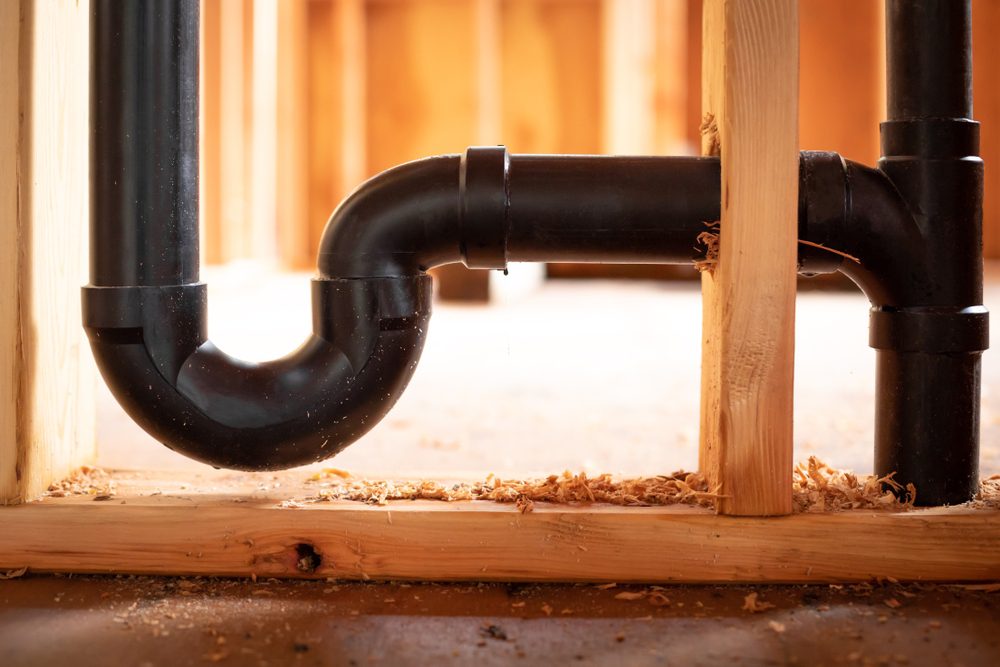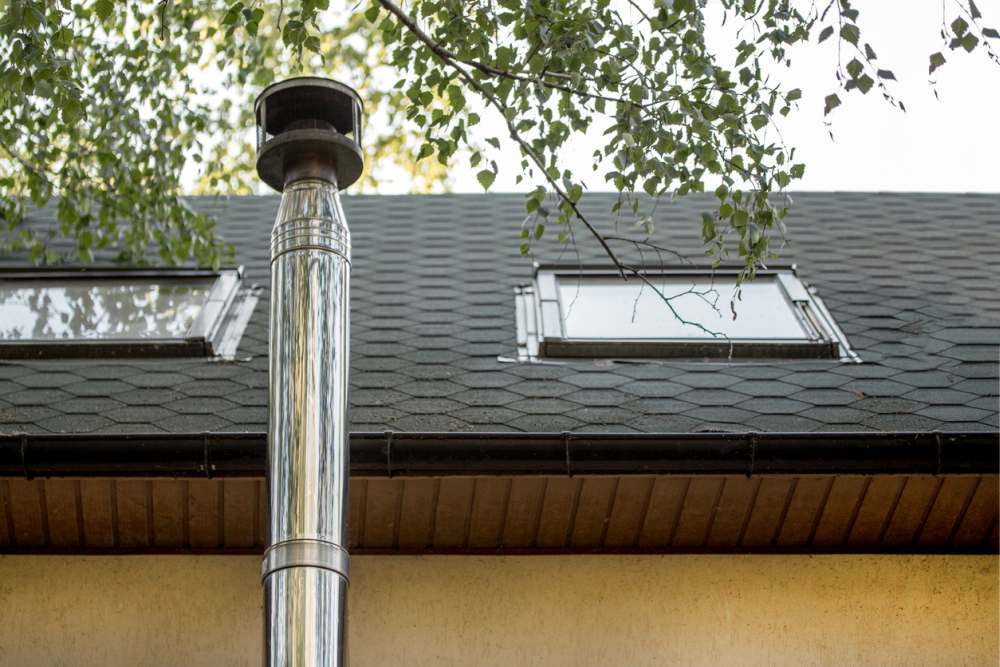Why Adequate Ventilation is Essential in Plumbing Systems
Why Adequate Ventilation is Essential in Plumbing Systems
Blog Article
The article which follows about Why Plumbing Air Vents Are Important is extremely stimulating. Read it for yourself and decide what you think of it.

Proper ventilation in plumbing systems is commonly overlooked, yet it is vital for preserving the functionality and safety and security of your home's pipes. Air flow helps regulate atmospheric pressure, prevent the accumulation of unsafe gases, and guarantee the efficient removal of waste. In this overview, we will discover the value of appropriate plumbing ventilation, how it functions, and the benefits it offers your pipes system.
Comprehending Air Flow in Pipes
Ventilation in pipes refers to the network of pipes that enable air to flow via the water drainage system. These vents offer several functions, including managing air pressure within the pipes, avoiding sewage system gases from going into the home, and assisting in the smooth circulation of wastewater.
Just How Air Flow Functions in Pipes Equipments
Air Pressure Regulation
Proper air flow keeps well balanced atmospheric pressure within the plumbing system. When water moves via pipes, it displaces air. Without appropriate air flow, this displacement can develop unfavorable pressure, resulting in reduce drains pipes or siphoning of water from traps, which can trigger unpleasant odors to leak right into the home.
Preventing Drain Gas Buildup
Among one of the most critical features of pipes vents is to prevent sewage system gases, such as methane and hydrogen sulfide, from gathering within the home. These gases can posture significant health and wellness dangers and are highly combustible. Vent pipelines enable these gases to run away securely outdoors.
Helping in Waste Removal
Air flow aids in the reliable removal of wastewater by avoiding airlocks in the water drainage system. When air can flow openly with the vents, it enables water and waste to move efficiently via the pipes, reducing the danger of clogs and back-ups.
Types of Plumbing Vents
Main Heap Vent
The primary stack vent, likewise known as the air vent pile, is the main vent in a pipes system. It expands from the major drainpipe line up with the roofing system, allowing gases to escape and fresh air to go into the system.
Branch Vent
Branch vents link to the main stack air vent and serve private components, such as sinks, toilets, and showers. These vents make certain that each fixture has ample air flow to work appropriately.
Air Admittance Valve (AAV).
An Air Admittance Valve (AAV) is a one-way shutoff that allows air to get in the plumbing system without the demand for a typical vent pipe expanding through the roofing. AAVs are frequently utilized in renovations or areas where mounting a conventional vent is unwise.
Indications of Poor Ventilation in Pipes.
Slow Draining Fixtures.
If your sinks, bathtubs, or commodes are draining gradually, it could be an indication of bad air flow. Poor air flow can develop a vacuum result, making it challenging for water to drain pipes effectively.
Gurgling Sounds.
Gurgling sounds coming from drains are frequently an outcome of air being drawn through water traps because of negative stress in the pipelines. This is a clear sign of inadequate air flow.
Undesirable Odors.
Sewage system odors inside your home are a warning that your pipes system is not effectively ventilated. This might mean that sewer gases are not being properly vented outside, causing potentially hazardous conditions.
Usual Air Flow Mistakes.
Poor Vent Sizing.
Making use of small air vent pipelines can cause bad air circulation and pressure inequalities in the system. It's vital to use vents that meet the specific needs of your pipes system.
Improper Vent Placement.
Putting vents also far from the fixtures they serve can reduce their performance. Correct placement ensures that air can flow freely and efficiently through the system.
Ignoring Code Requirements.
Building codes provide details guidelines for pipes air flow. Overlooking these codes can cause a system that falls short to operate appropriately and might cause pricey fixings or carcinogen.
Benefits of Correct Air Flow.
Improved System Efficiency.
Effectively ventilated pipes systems run much more successfully, with fewer clogs, faster draining pipes, and less pressure on the pipes. This efficiency expands the life-span of the plumbing system.
Improved Air Quality.
By protecting against sewage system gases from entering your home, appropriate air flow adds to far better indoor air quality, making your living environment healthier and much more comfy.
Protecting Against Water Damages.
Sufficient air flow helps avoid water from being siphoned out of traps, which can cause drain gases going into the home and causing water damage over time.
Steps to Guarantee Proper Ventilation.
Consulting Plumbing Codes.
Constantly consult local pipes codes when creating or customizing your plumbing system. These codes give the essential guidelines for proper venting and guarantee your system fulfills safety and security standards.
Regular Inspection and Upkeep.
Normal assessments can help determine potential air flow issues before they become major troubles. Maintenance tasks, such as cleansing vent pipes and looking for blockages, are crucial for keeping the system in good working order.
Expert Setup.
For brand-new installations or major modifications, it's wise to employ a professional plumbing technician. They have the proficiency to make sure the ventilation system is properly created and set up according to code.
Final thought.
Appropriate ventilation is a crucial part of any kind of pipes system, making certain that it functions efficiently and safely. By comprehending the value of ventilation, acknowledging the indicators of poor air flow, and taking actions to keep your system, you can protect against pricey problems and safeguard your home's air high quality.
Understanding the Role of Your Plumbing Vents in the Drainage System
The plumbing system in your home is more than just the kitchen sink, toilet, and bathroom. Some problems that arise within home plumbing are hard to detect because homeowners may not understand potential causes.
One part of the plumbing system that could cause you endless problems is the venting. The drain lines that run through your home and drain wastewater need proper venting to function properly. Faulty plumbing vents can lead to several problems that require the expertise of a plumber to check them out. Before finding experienced plumbing services, there are a few things to learn about plumbing vents.
Why vents are vital
Vents in the plumbing system lead to an outside area such as the roof or the back. The function of these vents is to keep sewer gases away from the drain pipes. They also establish seals in the drainage pipes that prevent the sucking back of waste gases into the home. Venting in the plumbing system also allows oxygen to get into the drainage system, which is an essential component in the breakdown of waste matter. The vents also ensure that the air pressure within the drainage system remains balanced, facilitating the flow of wastewater.
Possible problems
When the plumbing vents are problematic, one of the consequences is imbalanced water levels in the toilet. If you notice that the levels in the toilet bowl rise and fall all the time, then there may be something wrong with the vents.
Another issue is air bubble formation within the toilet. In most cases like these, the drain pipes are not receiving enough air. Lack of air pressure equalization is what leads to water flow problems. If you come across such issues in your home, make sure you call professional plumbers, such as the ones from Perfection Plumbing & Drain Cleaning Ltd.
Potential causes
Several scenarios can lead to some of the plumbing problems that homeowners suffer because of venting. One such scenario is the use of incorrectly sized vents. Usually, vents are the same size as the drain line to facilitate proper venting. Vents that are too small will lead to some plumbing issues. Another potential cause is fixtures that are not close enough to the vents. In this scenario, air forces itself through the traps of other fixtures, leading to gurgling sounds from toilets and sinks.
Most of these problems also happen with clogged vents. Tree leaves and debris can cause clogging when they make their way down a vent. Unclogging plumbing vents is a service that you can entrust to Saskatoon plumbers. They will know how to snake down vents and remove clogging stuck in fixtures.

Hopefully you liked our post about What Is A Plumbing Vent & How Do They Work?. Thank you so much for taking a few minutes to browse our blog. Sharing is caring. Helping others is fun. Many thanks for being here. Don't hesitate to pay a visit to our site back soon.
Book 24/7 Report this page